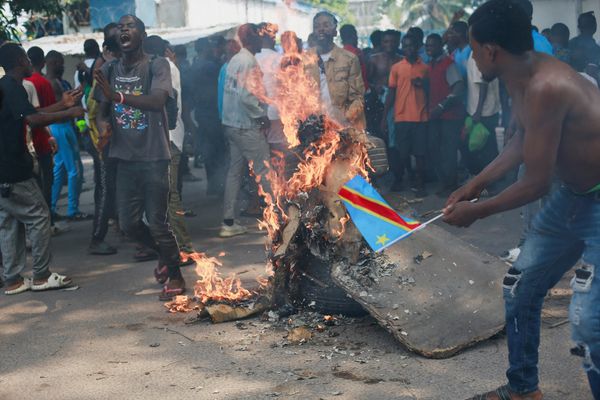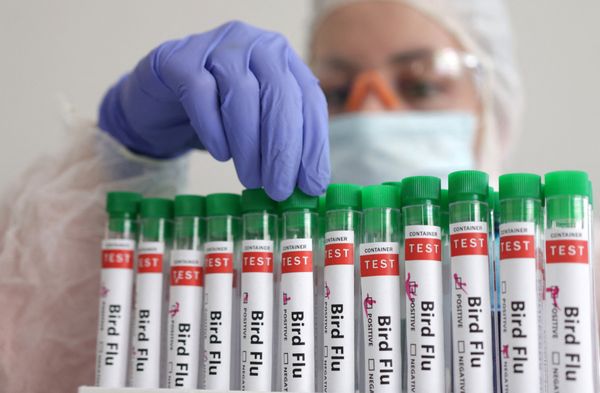
One morning last week, Mohammad Javed wheeled an air conditioner on to the pavement outside his catering business in Delhi, placed his chair a metre away, sat down and did not move all day. When the machine ran out of water, he asked passing boys to fetch a bucket. When he had to give directions to workers in the building across the lane, he shouted. Every few minutes, he took a long swig from his water bottle and spat the contents on to the ground without swallowing. “Ramadan,” he explained.
Northern India, like neighbouring Pakistan, is in the grip of a heatwave, with temperatures reaching 47C. A blanket of hot air has settled on Delhi clearing pavements across the usually busy capital. India is particularly vulnerable to temperature increases associated with climate change. Since 1992, about 25,000 Indians are estimated to have died because of heatwaves. Yet the country is quietly optimistic that it can prevent at least some of those deaths.
In the past two years, the numbers dying from heat-related illnesses has fallen sharply, from 2,040 in 2015 – when roads melted in the searing heat – to half that the following year and to a little over 200 in 2017, according to government data.
Public health advocates say this has been a triumph of common sense. A combination of public awareness campaigns, training for medical staff and simple policy changes – such as unlocking the gates of public gardens during the day –have averted thousands of deaths for little cost.
The catalyst was a heatwave in May 2010 in Ahmedabad, the largest city in the western state of Gujarat, that killed more than 1,100 people, and prompted authorities to seek help. “The first thing was making people aware that heat can kill,” said Parthasarathi Ganguly, a professor of public health and former World Health Organisation official.
“India is a tropical country, so people are used to heat: they take it as a natural phenomenon. They say, it will be hot – what’s new?”
News doesn't always have to be bad – indeed, the relentless focus on confrontation, disaster, antagonism and blame risks convincing the public that the world is hopeless and there is nothing we can do.
This series is an antidote, an attempt to show that there is plenty of hope, as our journalists scour the planet looking for pioneers, trailblazers, best practice, unsung heroes, ideas that work, ideas that might and innovations whose time might have come.
Readers can recommend other projects, people and progress that we should report on by contacting us at theupside@theguardian.com
Under Ahmedabad’s action plan – first implemented in 2013, when temperatures rose so high it risked triggering organ failure – school days were reduced, government work programmes ceased, and free water was distributed in busy areas. White reflective paint was applied to roofs in slum communities, cutting temperatures in homes by up to five degrees.
In hospitals, staff were trained to identify early signs of heat stroke, including dizziness or severe diarrhoea. Instead of waiting in stifling wards, patients were rushed to dedicated cool rooms equipped with fans, ice packs and, electricity supply permitting, air conditioning.
“Doctors don’t go on vacation any more when it’s hot,” said Anjali Jaiswal, of the US-based National Resource Defense Council, which advised on the plan. “They watch the temperature and make sure the hospital is staffed.”
Ahmedabad already had plenty of charities willing to distribute water. “They see it as an act of god,” Ganguly said. The city government simply allocated each charity a zone, to ensure the whole city was covered. The gates of city gardens, usually closed in the daytime, were opened so that hawkers, traffic police and rickshaw pullers could seek shade. “The council didn’t spend a rupee,” Ganguly said.
The first test of the new system was in May 2014 when, he says, temperatures again reached the levels that had killed so many. “According to our initial estimates, 800 fewer people died,” he said. “In terms of cost per lives saved, it is one of the most effective interventions in public health until now.” Since then, 11 more cities have adopted similar heat action plans, and one is currently in the works for Delhi.
India’s national disaster management authority is aiming to reduce the death toll from excessive heat to zero. So far this year, government officials say, the heat has killed 11 people. Temperatures will drop across India at the end of this month with the arrival of the monsoon rains.
This article is part of a series on possible solutions to some of the world’s most stubborn problems. What else should we cover? Email us at theupside@theguardian.com







